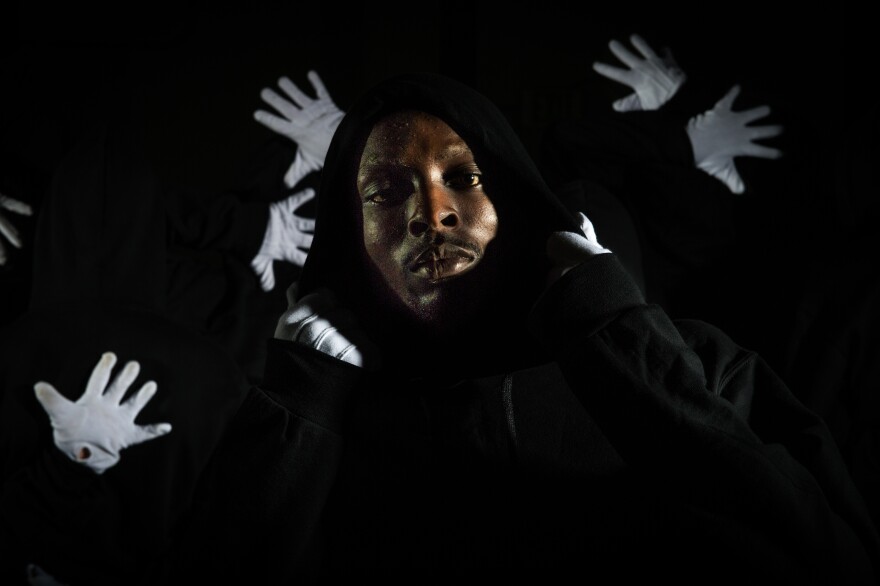When choreographer Donald Byrd first presented "The Minstrel Show" more than 20 years ago, he wasn't ready for the way audiences would react. He recalls one performance in La Jolla, California, when people started yelling at each other across the theater.
"I heard somebody say 'I hate this, I hate this," Byrd remembers. So he stopped the show mid-performance. "And I said, 'OK, we need to talk about this.'"
[asset-images[{"caption": "Donald Byrd's \"The Minstrel Show Revisited.\"", "fid": "9686", "style": "card_280", "uri": "public://201402/DSC_8364.jpg", "attribution": "Credit Courtesy of Spectrum Dance Theater/Nate Watters"}]]
Appropriating A Controversial Style
The subject that incensed Byrd's audience was race and how it's viewed in American popular culture. Byrd has appropriated the 19th century minstrel show format, which he sees as a precursor to today's variety and sketch comedy shows.
Traditionally, minstrel shows featured white people in black face, or black people in black face, singing, dancing and telling jokes. Often, American blacks were the butt of the jokes.
In Byrd's version, the performers revisited some of the dance styles that evolved out of these shows. What angered the La Jolla audience was the jokes. Byrd invited his viewers to submit racist jokes that were retold by the performers. He wanted audiences to examine their responses to words they'd never thought about.
[asset-images[{"caption": "Donald Byrd's \"The Minstrel Show Revisisted.\"", "fid": "9684", "style": "card_280", "uri": "public://201402/DSC_8518.jpg", "attribution": "Credit Courtesy of Spectrum Dance Theater/Nate Watters"}]]Historical, Contemporary Inspirations
The first incarnation of "The Minstrel Show" in 1991 was prompted, in part, by the violent death of a young black man in Brooklyn. Two decades later, Byrd decided to revive the award-winning performance after the shooting of Trayvon Martin and the trial of Martin's assailant, George Zimmerman. Byrd says he was surprised that American racial attitudes hadn't really changed in the two decades between those shootings.
Byrd's company, Spectrum Dance Theater, performs "The Minstrel Show Revisited" in blackface, and the dancers will solicit racist jokes from the audience. Byrd hopes to provoke a deep and complex conversation about racial politics.
"It is important to me that the work I do might make a difference," says Byrd, "that is, it contributes to our society and culture in ways that is more than entertainment."
Byrd says while he strives to create beautiful movement onstage, that's not enough to satisfy him as an artist. He says he doesn't want to make bricks, he wants to build something out of those raw materials.
To that end, this year Spectrum Dance Theater's productions will all focus on sex, race and religious politics in America. Byrd says he is ready for any negative response; he believes it's just the first step to making real change.
"The Minstrel Show Revisited" will be performed February 20 - 22 at Cornish Playhouse at Seattle Center.


